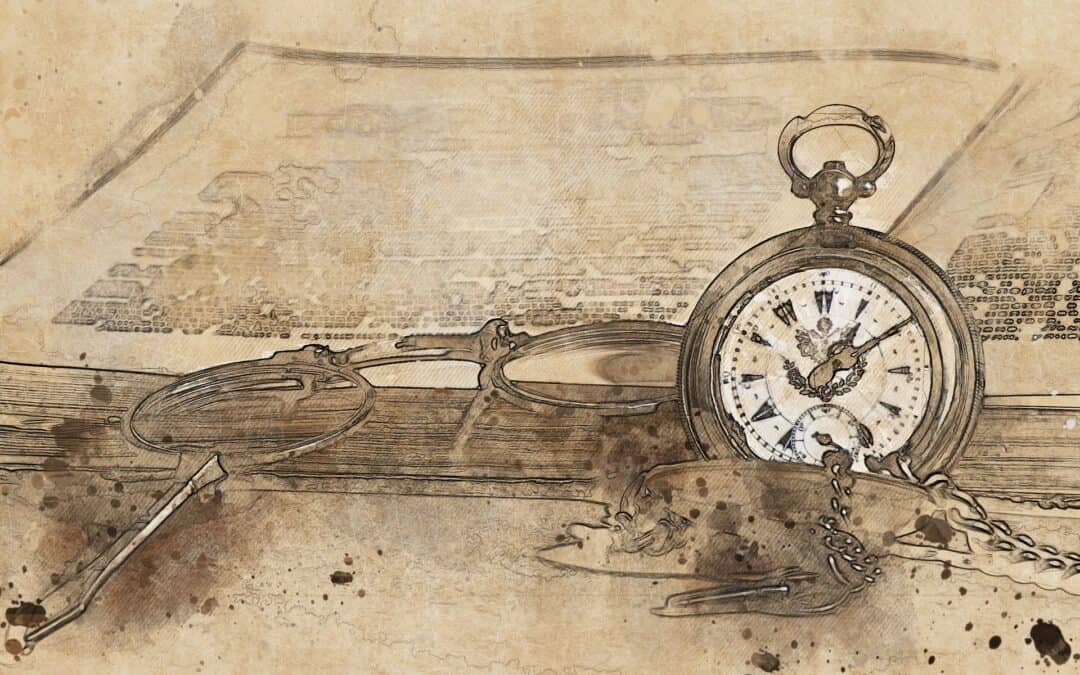Get a higher SAT Essay score - fast - with our instant-download course.
Alliteration
Repetition of consonant sounds, typically found in the first letters of words. The opening line to John Berryman’s Dream Songs, for example, is alliterative: “Huffy Henry hid the day.”
Allusion
A reference to history or another literary work. In Allen Ginsberg’s “A Supermarket in California,” Ginsberg alludes to Walt Whitman and Federico García Lorca, fellow poets, as well as Charon, the ferryman in Greek mythology who’s charged with carrying souls across the River Styx in the Underworld. The title of Dylan Thomas’s “And Death Shall Have No Dominion” alludes to St. Paul’s Epistle to the Romans (6:9) in the Bible.
Assonance
Repetition of vowel sounds in a group of words. For example, the first two lines in Gerard Manley Hopkins’s poem “Spring and Fall” employ assonance in their repetition of the “ah,” “ee,” and “oh” sounds: “Márgarét, áre you gríeving / over Goldengrove unleaving?”
Caricature
An exaggerated depiction or characterization, usually for comic effect. This is closely related to the terms satire and parody. Charles Dickens used caricature in his novels to explore human behavior.
Cliché
An overused or stock expression that has lost its freshness. “Avoid clichés like the plague!”
Epiphany
An unexpected moment of clarity and realization, often spiritual or profound. A famous epiphany occurs in the story of Oedipus, when Oedipus realizes he has killed his father and married his mother.
Foreshadowing
Clues left by the author that hint at the progression of events. As Anton Chekhov writes, “If you say in the first chapter that there is a rifle hanging on the wall, in the second or third chapter it absolutely must go off. If it’s not going to be fired, it shouldn’t be hanging there.” The presence of such a gun can be considered foreshadowing.
Hyperbole
An exaggeration or overstatement. “You’re dumber than a box of rocks!”
Idiom
An expression unique to a certain language that is not meant to be taken literally. For example, “It’s raining cats and dogs.”
Imagery
Language meant to engage the senses, particularly sight. For example, Allen Ginsberg writes in “Howl” of “Moloch whose eyes are a thousand blind windows!”
Irony
Exposes a contrast between how things are perceived and how they actually are. There are three main types of irony. Dramatic irony occurs when the audience is aware of more than the characters, such as when Anne Frank expresses her desire to go dancing when she escapes from the Secret Annex. Situational irony is when the outcome of events is the opposite from what is expected. Verbal irony refers to the use of words to mean the opposite of what is stated. “Thanks for the ticket, officer! You just made my day.” (Note: none of the situations described in Alanis Morisette’s “Ironic” are actually ironic.)
Metaphor
Comparing two things by equating them, without using “like” or “as.” When Romeo says “Juliet is the sun,” he’s speaking metaphorically.
Motif
A recurring structure, instance, or device that serves to emphasize theme. For example, in The Great Gatsby, the green light of Buchanan’s dock is used in Chapter 1 to mark Gatsby’s desire for Daisy and in Chapter 9 to suggest Nick’s ambiguous future.
Onomatopoeia
Words like pop, bang, or cock-a-doodle-doo that are meant to resemble the sounds to which they refer.
Oxymoron
The use of two contradictory terms, such as “idiot savant” or “noble savage.”
Paradox
A seemingly contradictory statement that gestures toward a deeper truth. For example, in Shakespeare’s Hamlet, Hamlet says, “I must be cruel, only to be kind.” Another example is found in Oscar Wilde’s “I can resist anything but temptation.”
Personification
The attribution of human traits to nonhuman things. For example, Homer’s “rosy-fingered dawn” and Emily Dickinson’s “bashful flowers.”
Pun
A play on words that relies on sonic similarity, as in The Importance of Being Earnest, where “Earnest” is a pun on the name of the character “Ernest.”
Rhetorical question
A question employed for rhetorical purposes that is meant not to elicit an actual response, but rather spark thought. For example, Shakespeare’s “Shall I compare thee to a summer’s day?”
Sarcasm
Saying one thing and meaning another, usually distinguished by tone. Sarcasm is a form of verbal irony. For example, a person might say “I’m so sorry” when he or she isn’t sorry at all.
Simile
A comparison made between two things with “like” or “as.” For example, Shakespeare’s “My mistress’ eyes are nothing like the sun.”
Symbol
Something or someone that represents something else, usually an abstract idea. In “The Rime of the Ancient Mariner,” for example, the albatross the mariner kills (and then wears around his neck) becomes a symbol for his curse and for the burden of sin.
Theme
A universal idea present in a text. For example, in Frankenstein, one of themes is monstrosity and what constitutes a “monster” or the quality of being “monstrous.”
Thesis
A text’s main argument, which is proven by examples and analysis. For example, the statement “In Siddhartha, knowledge is fundamentally self-knowledge” functions as thesis, because we can attempt to prove it.
Tone
The prevailing attitude with which or perspective from which an author (or character) treats a character or subject. For example, in The Catcher in the Rye, Holden Caulfield’s tone is often jaded and sarcastic, as when he says, “People never notice anything.”
Contact Us For Higher SAT and ACT Scores!
If you’re trying to get a higher SAT or ACT score, we can help. Contact us today for a free consultation!
You can also visit our online course store or browse through more blog articles on SAT & ACT Prep and College Readiness.
Before you go, make sure to join our free SAT prep email list. Talk again soon!
